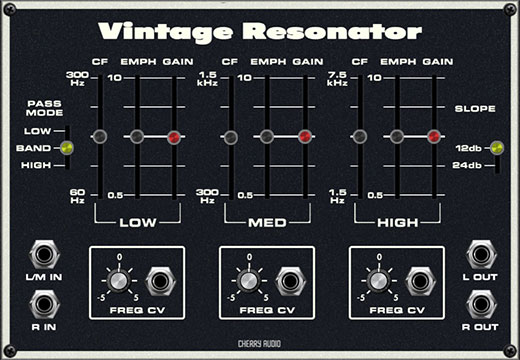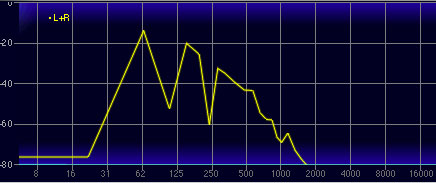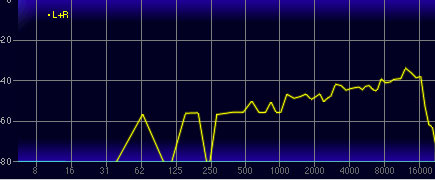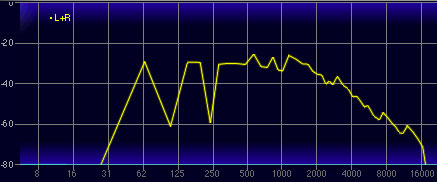The Vintage Resonator module was inspired by the Resonators section seen in one of the very first polysynths of the 70s. The "resonators," aka, filters are globally switchable to operate in highpass, bandpass, or lowpass modes, and they're fantastic at imparting an organic feel to otherwise blah patches. If you've ever heard "The Model" by Kraftwerk, almost every sound in the track makes use of this resonators section.
By most accounts, the original version has two major shortcomings: the filter slopes are a little too shallow to create really dramatic resonance effects, and the filter cutoff frequencies aren't CV controllable. We've addressed both of these issues with a 12/24 db slope selector, as well as bipolar CV inputs for each filter's cutoff frequency (which allow killer phaser-ish swept sounds). Best of all, Vintage Resonator costs a fraction of the original, and we excluded the endearing ALWAYS-broken "feature."
How It Works
The original instrument got a little fanciful with its use of the word "resonators." In actuality it consists of three state-variable filters in a parallel configuration. In other words, the signal doesn't flow into each filter, one after the other - the signal is split, runs into all three filters and their collective outputs are mixed together. This means that settings on each section won't interact with settings on another, resulting in three separate filter tonalities sounding simultaneously (dependent on Gain settings). Cranking up the Emph controls (aka, resonance) for each band can create three individual "peaks" or resonances, hence the "resonator" name.
One unique aspect of the original resonator filters is that each is band-limited. Most synthesizer filters are configured such that the cutoff frequency covers the entire audible sound spectrum (20-20,000 Hz, give or take), whereas the resonator filters are set up more like a parametric EQ where each filter covers a section of the audio spectrum, i.e. low, mid, and high as follows:
Low: 60 - 300 Hz
Med: 300 - 1500 Hz
High: 1500 - 7500 Hz
(The original instrument panel labels the mid frequencies as "Med," because, y'know, "medium frequencies.")
Pass Mode
Vintage Resonator has a three-position Pass Mode switch that globally selects the behavior of all three filters. If you're not up on your audio filter nerdery, here's an overview of how each mode works:
A lowpass filter allows frequencies below the cutoff frequency setting to pass through, but blocks frequencies above the cutoff frequency. The frequency plot above shows the effect of a lowpass filter with its cutoff set at 412 Hz on a sawtooth wave (the vertical axis represents amplitude and the horizontal axis represents frequency). Notice how the high-frequency content trails off at the high end of the audio spectrum.
The plot above shows the same oscillator signal and cutoff frequency setting using highpass mode. This is the opposite of lowpass mode: high-frequency content remains, but low frequencies are removed as the cutoff frequency increases.
The plot above shows the same oscillator signal and cutoff frequency setting using the bandpass mode. Bandpass mode combines both lowpass and highpass modes, leaving sound only "in the middle." The cutoff frequency lies roughly halfway between the falloff slope on each side.
Inputs, Outputs and Controls
L/M In and R In jacks- These are the mono and stereo audio inputs. Though it only has one set of controls, Vintage Resonator actually has two complete and independent signal paths "under the hood" for true stereo processing. For mono use, simply use the L/M In jack.
L Out and R Out jacks- Stereo output jacks. For mono processing, use the L Out jack. (and don't call me Jack)
CF (Cutoff Frequency)- Sets the frequency where attenuation begins. Attenuation will be above or below this frequency (or both) depending on the Pass Mode switch setting.
Emph (Resonance)- Emphasizes sound energy at and around the current cutoff frequency by adding feedback from the filter's output back to its input. At lower settings, this can be used to create mild resonances such as those heard in acoustic instruments. At more extreme settings, resonance can create a pure sine wave at its own frequency (variable via the CF slider). Be careful with the Emph sliders as they can get loud at extreme settings. Note that this "ringing" resonant frequency will be much more prominent with the Slope switch in the 24db position.
Gain- This acts as a volume control for each resonator section. Resonator sections can be muted by setting their Gain control to 0%.
Slope- The nature of how a filter works is such that its affect on frequencies "falls off" above or below the cutoff frequency (see the Pass Mode section above). Slope adjusts the steepness of this falloff, hence the "slope" terminology. A 12db per/octave filter has a shallower slope, giving it a clearer and brighter character, whereas a 24db per/octave filter's steeper slope gives it a tighter and darker tone (as well as a far more pronounced ringing sound when the Emph slider is turned up).
Freq CV mod input/attenuators- Adjusts the depth of the cutoff frequency modulation, i.e. how much the filters sweep back and forth when a CV signal is applied. The Freq CV mod input and attenuator allow negative or positive CV control of cutoff frequency. The center setting correlates to no modulation.
When used in conjunction with one or more LFOs, the CV mod inputs are especially effective for creating all manner of phaser-esque sweeping madness.



